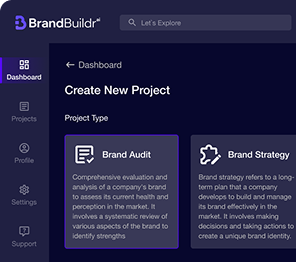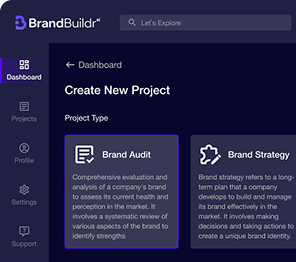The global B2C ecommerce industry and market is experiencing unprecedented growth, with revenues expected to reach $37.72 trillion by 2034, growing at a remarkable CAGR of 19.13%. Also in 2023, e-commerce accounted for 19.4 percent of total retail sales worldwide. By 2027, the figure is forecast to increase to 22.6 percent. Businesses must prioritize building high-performance platforms that can handle increasing consumer demands while delivering exceptional user experiences.

What is a B2C Ecommerce Platform and Why Does It Matter?
A B2C ecommerce platform is a comprehensive online solution that enables businesses to sell products or services directly to consumers through digital storefronts. These platforms provide the necessary infrastructure for companies to showcase their offerings, manage product listings, facilitate secure transactions, and interact with customers throughout the entire purchasing journey.
The Core Functionality of a B2C Ecommerce Platform
At its core, a B2C ecommerce platform serves as a bridge between businesses and consumers, making the purchasing experience more efficient and accessible. The platform encompasses essential components including:
%20(1).png)
- Product catalogs
- Shopping carts
- Payment gateways
- Customer management tools
- Order processing systems
These integrated functionalities work together to create a seamless digital marketplace where consumers can browse, compare, and purchase products from anywhere at any time.
Modern B2C platforms have evolved far beyond simple online storefronts. They now incorporate advanced features such as:
- AI-powered personalization
- Mobile optimization
- Multi-channel integration
- Sophisticated analytics
Why Investing in a High-Performance Ecommerce Platform is Critical
The stakes for ecommerce performance have never been higher. Research shows that for every second a page load is delayed, conversion rates drop by an average of 7%. With 47% of consumers expecting pages to load in two seconds or less, businesses cannot afford to compromise on platform performance.
A high-performance B2C ecommerce platform is essential for several critical reasons:
- It directly impacts customer experience and retention. Fast-loading, responsive websites reduce bounce rates and encourage users to complete their purchases.
- It supports business scalability by handling traffic spikes during peak seasons without compromising functionality.
- It provides a competitive advantage in an increasingly crowded marketplace where consumers have numerous alternatives at their fingertips.
Key Features of a High-Performance B2C Ecommerce Platform
Building a successful B2C ecommerce platform requires implementing essential features that enhance user experience, drive conversions, and support business growth. These features form the foundation of any competitive online retail presence.
Optimizing User Experience for Seamless Shopping
User experience stands as the cornerstone of successful B2C ecommerce platforms. A seamless shopping experience begins with:
- Intuitive navigation
- Clear product categorization
- Powerful search functionality
Advanced search capabilities should include auto-suggestions, filters, and AI-powered product recommendations based on search queries.
Product pages require special attention, featuring:
- High-resolution, zoomable images with 360-degree views
- Detailed scannable descriptions
- User-generated content including reviews and photos
According to Salsify research, 70% of consumers need to see at least three product images before making a purchase decision.
The checkout process must be streamlined and frictionless, offering:
- One-click checkout options
- Multiple payment methods including digital wallets, Buy Now Pay Later (BNPL), and cryptocurrency payments
This approach significantly reduces cart abandonment rates and enhances customer satisfaction.
Secure Payment Gateways and Order Management Systems
Security represents a non-negotiable aspect of B2C ecommerce platforms. Secure payment gateways must:
- Support multiple payment options
- Maintain the highest security standards
This includes integration with trusted payment processors like PayPal, Stripe, and major credit card networks, ensuring customers can pay using their preferred methods.
Robust order management systems handle the entire order lifecycle from placement to fulfillment. These systems must integrate with:
- Inventory management
- Shipping providers
- Customer communication tools

Technologies to Power Your B2C Ecommerce Platform
The technology stack underlying a B2C ecommerce platform determines its performance, scalability, and ability to meet evolving business requirements. Selecting the right combination of technologies is crucial for long-term success.
Choosing the Right Ecommerce Framework and CMS
The choice of ecommerce framework significantly impacts platform performance, customization capabilities, and maintenance requirements. Popular options include:
- Shopify, which offers ease of use and extensive app ecosystem
- Magento, providing powerful customization and enterprise-grade features
- WooCommerce, delivering flexibility through WordPress integration
Shopify excels in fast time-to-market scenarios with its easy setup and robust APIs. However, it may have limitations for complex use cases and enterprise-level customization requirements.
Magento offers granular control over functionality and design, making it suitable for businesses requiring extensive customization. It provides advanced SEO capabilities and can handle complex catalog structures, though it requires more technical expertise to implement and maintain.
WooCommerce benefits from WordPress's content management strengths and extensive plugin ecosystem, offering excellent SEO capabilities and content integration. It's particularly suitable for businesses that prioritize content marketing alongside ecommerce functionality.
The Role of Cloud Hosting for Scalable Ecommerce Solutions
Cloud hosting has revolutionized ecommerce scalability by providing on-demand resource allocation and global distribution capabilities. Unlike traditional hosting that relies on single servers, cloud platforms distribute website data across networks of virtual servers, ensuring optimal performance even under heavy load.
%20(1)%20(1).png)
Key benefits of cloud hosting for ecommerce include:
- Enhanced speed through solid-state drives (SSDs) and content delivery networks (CDNs)
- Unmatched scalability that adapts to business growth
- Improved reliability with data mirrored across multiple servers
- Cost efficiency through pay-as-you-use pricing models
Cloud hosting enables businesses to handle traffic spikes during peak shopping seasons like Black Friday without compromising website performance. This flexibility is crucial for maintaining customer satisfaction and maximizing revenue during critical sales periods.
How to Ensure Scalability and Flexibility in Your B2C Ecommerce Platform
Scalability and flexibility are essential characteristics that enable B2C ecommerce platforms to grow alongside businesses while adapting to changing market conditions and customer needs.
Building a Platform for High Traffic and Transactions
Designing for scalability requires implementing architectural patterns that can handle increasing loads without performance degradation.
- Microservices architecture offers significant advantages by breaking down monolithic applications into smaller, independent services that can be scaled individually.
This approach allows different components like:
- Authentication
- Product management
- Order processing
to scale based on demand, optimizing resource utilization and improving system reliability. Each microservice can be deployed, updated, and scaled independently, reducing system-wide risks and enabling faster development cycles.
Load balancing and caching strategies are crucial for managing high-traffic scenarios. Implementing:
- Content delivery networks (CDNs) ensures fast content delivery globally.
- Database optimization techniques like indexing and query optimization maintain performance as data volumes grow.
Integration with Multiple Sales Channels and Marketplaces
Modern B2C ecommerce platforms must support omnichannel selling strategies that provide unified customer experiences across multiple touchpoints. This requires integration with:
- Social media platforms
- Marketplaces like Amazon and eBay
- Physical stores
- Mobile applications
Omnichannel integration involves full data synchronization between channels, ensuring inventory, pricing, and customer information remain consistent across all touchpoints. This unified approach contrasts with multichannel strategies where each platform operates independently, potentially creating fragmented customer experiences.
API-first architecture facilitates seamless integrations with:
- Third-party services
- Payment processors
- Shipping providers
- Marketing tools
Well-designed APIs enable businesses to adapt quickly to new opportunities and integrate emerging technologies without major platform overhauls.

The Importance of UX/UI in B2C Ecommerce Platforms
User experience design has become a critical differentiator in B2C ecommerce, directly impacting customer satisfaction, conversion rates, and business success.
How to Design an Intuitive and Engaging Ecommerce Website
Effective ecommerce design prioritizes user needs and behaviors, creating intuitive navigation paths that guide customers toward purchase decisions.
- Clear menu structures
- Logical categorization
- Prominent search functionality
help users find products quickly and efficiently.
Visual design elements must balance aesthetics with functionality.
- High-quality product images
- Consistent branding
- Clean layouts
create professional appearances that build trust and credibility. Interactive elements like:
- Product zoom
- 360-degree views
- Augmented reality features
enhance product visualization and reduce purchase uncertainty.
Personalization plays an increasingly important role in user experience.
- AI-powered recommendation engines analyze customer behavior to suggest relevant products, increasing average order values and customer satisfaction.
These systems can drive up to 35% of total sales, as demonstrated by successful implementations at companies like Amazon.
Mobile Optimization for Seamless Shopping Across Devices
Mobile commerce is projected to account for 75% of all ecommerce sales by 2025, with global m-commerce revenue expected to hit $6.5 trillion. This massive shift toward mobile shopping makes mobile optimization absolutely critical for B2C ecommerce success.
Mobile-first design principles ensure websites perform optimally on smartphones and tablets. This includes:
- Implementing responsive layouts that adapt to different screen sizes
- Optimizing touch interactions for easy navigation
- Minimizing load times for mobile networks
Over 54% of mobile commerce transactions now occur in dedicated shopping apps rather than mobile browsers.
This trend suggests businesses should consider developing native mobile applications alongside responsive websites to capture the full mobile market opportunity.
Securing Your B2C Ecommerce Platform: Best Practices
Security represents a fundamental requirement for B2C ecommerce platforms, protecting both businesses and customers from fraud, data breaches, and financial losses.
Ensuring Data Security and Payment Processing Compliance
Payment Card Industry Data Security Standard (PCI DSS) compliance is mandatory for all businesses that handle credit card information. This comprehensive framework includes 12 core requirements covering:
- Network security
- Data protection
- Access controls
- Regular security monitoring
SSL/TLS encryption protects data transmission between customers and websites, ensuring sensitive information like credit card details and personal data remain secure during transit.
- SSL certificates provide authentication, verifying website identity and building customer trust through visible security indicators.
Advanced security measures include:
- Implementing firewalls
- Intrusion detection systems
- Regular security audits to identify and address vulnerabilities
Multi-factor authentication and role-based access controls help prevent unauthorized access to sensitive systems and data.
Building Trust Through Secure and Transparent Transactions
Trust-building elements are essential for converting visitors into customers.
- Security badges and certifications displayed prominently on websites, especially during checkout, reassure customers about data protection measures.
- Transparent policies regarding data handling, returns, and privacy rights demonstrate commitment to customer protection.
- Easy access to customer service for addressing security concerns or transaction issues further enhances trust and confidence.
Fraud detection and prevention tools leverage AI and machine learning to analyze transaction patterns and identify suspicious activities in real-time.
- These systems protect both businesses and customers from fraudulent transactions while maintaining smooth experiences for legitimate purchases.
Final Thoughts
Building a high-performance B2C ecommerce platform requires careful consideration of features, technologies, and design strategies that prioritize customer experience while supporting business growth. The combination of robust technical infrastructure, intuitive user experience design, and comprehensive security measures creates platforms capable of competing effectively in today's dynamic digital marketplace. Success in B2C ecommerce depends on selecting technologies that can scale with business growth, implementing features that meet evolving customer expectations, and maintaining security standards that protect all stakeholders. As the e-commerce industry continues to evolve, businesses must remain adaptable and customer-focused to achieve sustainable success.
The investment in high-performance B2C ecommerce platforms pays dividends through improved conversion rates, enhanced customer satisfaction, and the ability to capitalize on the tremendous growth opportunities in the expanding digital marketplace. By focusing on these key areas, businesses can build platforms that not only meet current needs but also adapt to future challenges and opportunities.
At Codebridge, we design and develop high-performance B2C ecommerce platforms that combine scalability, performance, and user-centric design. Whether you're launching a new storefront or optimizing an existing solution, our expert team helps you create seamless shopping experiences that convert visitors into loyal customers. Contact us today to build a future-ready ecommerce platform that drives real business results.
FAQ
What are the essential features every B2C ecommerce platform should include?
A strong B2C ecommerce platform should include user-friendly navigation, secure payment gateways, product catalog management, mobile responsiveness, and fast checkout. Additional essentials such as customer accounts, product search filters, and order tracking enhance overall shopping experiences.
Why is mobile optimization crucial for B2C ecommerce platform development?
Mobile optimization is vital because most consumers shop via smartphones. A mobile-responsive or app-like experience increases conversions and reduces cart abandonment. Platforms built with mobile-first design ensure fast loading times and smooth checkout across all devices.
What technologies power modern B2C ecommerce platforms?
Modern platforms rely on technologies such as React, Next.js, Node.js, and headless architectures for performance and scalability. Cloud hosting, microservices, and API-driven systems also play a major role. These technologies support fast development and allow businesses to scale efficiently.
How can AI improve a B2C ecommerce platform?
AI enhances ecommerce through personalized product recommendations, predictive search, dynamic pricing, and intelligent customer support. These AI-driven features increase engagement, boost sales, and improve user satisfaction. AI also helps businesses analyze customer behavior for better decision-making.
Why is security a top priority when developing a B2C ecommerce platform?
Security protects customer data, prevents fraud, and ensures compliance with standards such as PCI DSS and GDPR. Implementing SSL certificates, encryption, tokenization, and secure authentication helps build customer trust. A secure platform reduces risks and strengthens brand reputation.
How can startups ensure scalability in their ecommerce platform?
Startups can ensure scalability by using cloud infrastructure, adopting microservices, and choosing performance-optimized frameworks. Caching, load balancing, and modular development allow the platform to grow as traffic increases. This ensures smooth operations during peak shopping periods.
Heading 1
Heading 2
Heading 3
Heading 4
Heading 5
Heading 6
Lorem ipsum dolor sit amet, consectetur adipiscing elit, sed do eiusmod tempor incididunt ut labore et dolore magna aliqua. Ut enim ad minim veniam, quis nostrud exercitation ullamco laboris nisi ut aliquip ex ea commodo consequat. Duis aute irure dolor in reprehenderit in voluptate velit esse cillum dolore eu fugiat nulla pariatur.
Block quote
Ordered list
- Item 1
- Item 2
- Item 3
Unordered list
- Item A
- Item B
- Item C
Bold text
Emphasis
Superscript
Subscript





















.avif)



.avif)

.avif)


